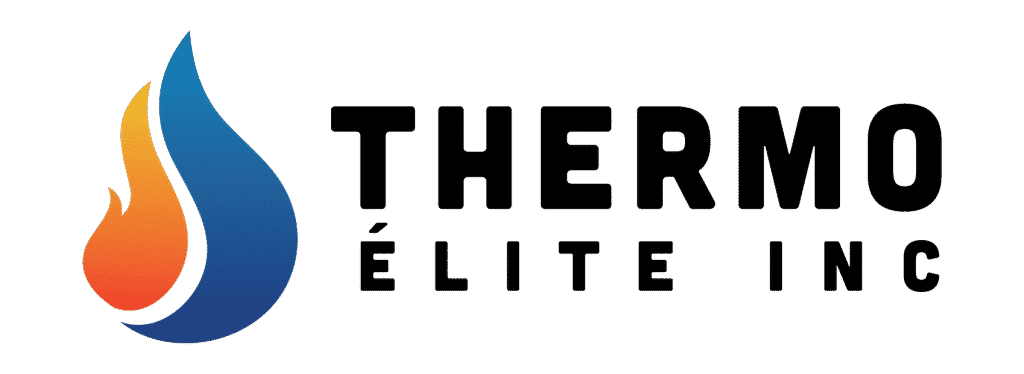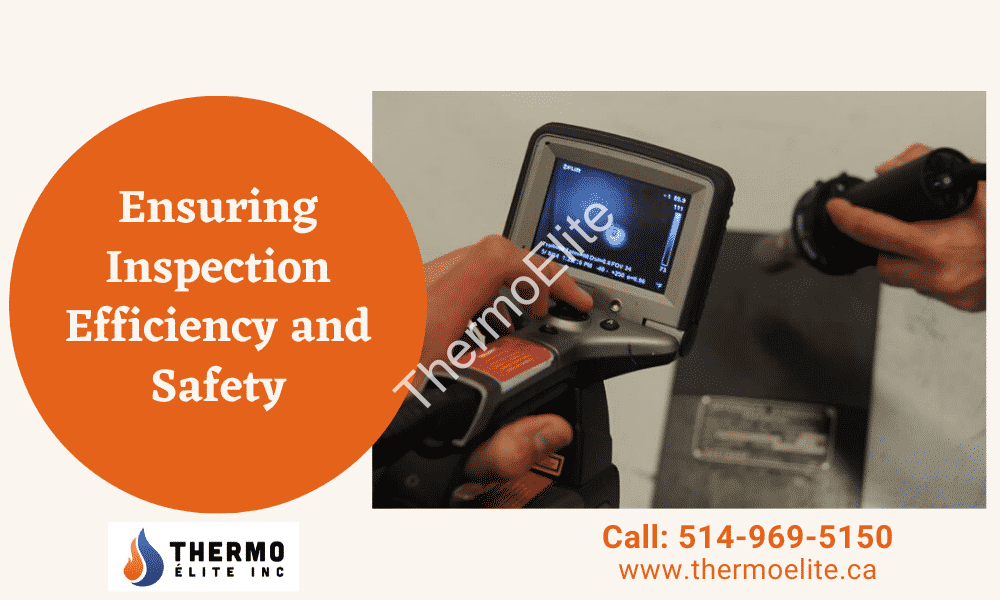These days, worker safety is a primary concern. The use of technologies like thermal imaging helps a great deal in ensuring effective inspections that help maintain safety. The latest updates in the NFPA 70E ensures the adoption of safe work practices reducing the risk that workers face while dealing with equipment during normal conditions. NFPA 70E also deals with situations where there’s a high probability of being exposed to arc flash and arc light.
The Implementation of the Hierarchy of Control
NFPA 70E has recently laid down a detailed risk assessment procedure. The objective is to implement the most effective method of control along with risk elimination. The probable hazards are identified, the risks involved are assessed, and then finally a risk control regime is applied by the NFPA’s “Hierarchy of Risk Control Methods.”
It is a must to implement The Hierarchy of Risk Control Methods. It’s not optional anymore. There must be a systematic application of this hierarchy following its proper sequence. This helps in reducing any risk inherent to any inspection activity. It may also remove the risk altogether. Six levels of control comprise The Hierarchy of Risk Control.
They are-
- Elimination
- Substitution
- Engineering Controls
- Awareness
- Administrative Controls
- Personal Protective Equipment
To ensure the proper and complete application of The Hierarchy of Control, all six levels need to be looked into and then removed. The next control level, also the one that’s less effective should be taken up only after the previous level is effectively handled.
Thermal imagery is gaining popularity with time. It has been accepted as an effective and efficient tool for in-depth analysis.
Thermal imaging helps greatly in electrical maintenance by detecting which parts in a power line are at risk of being overheated. That helps prevent leakages that may cause fire or electrocution. Even when inspecting pipes and pipe fittings for leakages, the technology of thermal imaging helps a great deal. As thermal imaging can locate leakages by detecting fluctuations in surface temperature, it can help locate cracks in pipes. That’s because a drop in temperature on a surface would indicate its contact with water. This in turn indicates water seepage on the surface through a crack.
The technology of thermal imaging also helps in ensuring the efficiency and safety of the inspection process during the construction of houses. It helps identify leakages in the insulation helping HVAC engineers with their work. It ensures that there are no issues with the building’s temperature control mechanism.
Inspection efficiency and safety during construction activities are made more effective with the use of thermal imaging. You won’t need to climb onto roofs to spot pests. Thermal imaging devices can even spot termites, very critical to the maintenance of buildings and an integral part of inspections.
The use of Infrared thermography has some inherent benefits. They are-
- Data collection from a safe distance during hazards
- Fast and efficient scanning of large areas
- No disruption in production when data is gathered
- Quickly identify locations with irregularities
- Quick detection of issues
These benefits help ensure more efficient inspection along with greater safety. Safety is enhanced as thermal imaging helps carry out inspections without having to come in direct contact with the equipment. Spots like ceilings and ductworks can be inspected without having to climb ladders or boarding lifts.
With the results from thermal imaging being more reliable and accurate, timely rectification of problems has been made possible. That helps prevent any major incident. Therefore, inspection efficiency has been greatly enhanced as has been safety.
Thermal imaging also helps know how effective repairs have been by scanning the equipment in question with an infrared camera. That helps locate areas that may need further repair. Effective repair of equipment helps prevent downtime. This ensures increased inspection efficiency and safety.
Proper maintenance of equipment with timely repairs helps maintain production at an optimum level. Infrared thermography helps prevent machine breakdown and maintain productivity levels.
Thermal imagers can help carry out inspections more safely and efficiently. They enhance efficiency as they are easy to use and carry around. The results they give are also reliable and accurate. The results can also be shared easily across multiple devices. That makes these devices a very convenient tool to have.
Infrared thermography makes inspections far more efficient as they help locate cracks and leakages. Cracks in pipes or pipelines in industrial setups are an area of special concern. Any negligence can cause major accidents that may cause serious injuries or even fatalities. Having a professional thermographer on board facilitates the quick detection of cracks and leakages without much fuss. They can also help in preventive maintenance by carrying out regular inspections that may help locate issues.
The use of infrared thermography also helps detect spots that may cause fires. It helps locate any spot where a fire may not have been extinguished completely. Such situations are potentially hazardous and can cause major accidents if not detected on time during inspections. Thermal imaging helps a great deal in preventing them with timely detections.
Thermal cameras can also check air quality. You can check the air around a smoke-stack to see if it’s working. If the quality of the air is poor, it indicates that the smoke-stacks aren’t working. Air quality can be judged by its temperature. High temperature indicates poor air quality. Thermal imaging is capable of detecting air with high temperatures. That cautions you about the poor air quality during inspections.
Inspection efficiency and safety can be raised even further as thermal imaging also helps detect gas leaks. These require specially calibrated thermal cameras. These cameras have been of great use in scanning passengers at airports for high temperatures. This has helped prevent the spread of diseases.
It is desirable to have a safety plan in place for the entire workplace. Ideally, the inspection of electrical equipment should be a component of the safety plan for your workplace. We shall now focus on this.
Unfortunately, it’s been observed that most organizations do not treat safety inspections as a necessity. Financial reasons make inspection efficiency and safety appear trivial. However, it’s a sign of short-sightedness that brings only limited gains. Being negligent about safety can result in accidents causing serious injuries. Some accidents may even be fatal. Organizations need to realize that proper safety procedures can reduce revenue loss by ensuring that there are no injuries or illnesses that can cause a loss of man-days, not to mention any potential lawsuits due to negligence. The use of technology like thermal imaging should be highly encouraged.
In an ideal situation, inspections should be carried out efficiently and regularly by professionals. Inspections help in the identification of potential risks and help decide how corrective action can be taken. They help gain a deeper insight into the tasks involved in a job that in turn helps decide how a job can be better done to minimize hazards. It must be mentioned that a thorough analysis of potential risks and ways to eliminate them can help businesses in saving costs by preventing injuries to workers.
Below are a few methods to make safety inspections at your workplace more efficient.
Locate potentially Hazardous situations
Factors like noise, vibration, temperature, lighting, and ventilation should be taken into account. That’s because these elements may cause conditions that are unsafe and unhealthy. Inadequate lighting and not setting the temperature at levels that ensure comfort create unhealthy working conditions. Again, excessive noise and lack of proper ventilation are safety issues which when overlooked can cause health problems. An efficient safety inspection should not only cover the workplace but also extend to areas like the parking lot or the safe assembly zone. The plan for inspection should take into account all the elements in the workplace. These include the where who, what, when, and how.
Workplace hazards are of various kinds. All of them deserve due emphasis. The hazards are usually classified into-
- biological
- chemical
- ergonomic
- physical
- psychological
- safety hazards
Physical issues like the lack of adequate guards for machines or working conditions that are unsafe might exist. Again, there might be biological issues like viruses, bacteria, or fungi at the workplace. Thermal imaging helps detect the presence of such bacteria or fungi. There might be ergonomic issues like movements that are forceful and repetitive or being seated in an awkward position for a long period. There might also be safety hazards like faulty equipment. Psychological hazards like stress or overwork too might bog down an employee. All these elements could hamper productivity and they should be looked into without delay.
Employees Concerns should be addressed
The best safety practice is to take feedback from employees. They are the ones closest to the action, in other words, they are involved in the daily activities. Which areas need attention can be identified from their inputs. These should be addressed without delay. The aim should be to make continuous improvements. This can be achieved through the streamlining of operations that help raise productivity.
Identification of Underlying Issues
Safety inspections must not only revolve around the identification of issues. After a hazard has been identified, what caused the hazard should be identified. Once that is done, efforts are to be made to eliminate them.
Make it a Point to Inform the Management
It’s important to bring any hazard that has the potential to cause damage to the management’s notice without delay. No such hazard should be ignored. This should apply to not just inspections, but the very way the business operates. If issues are reported on time without delay, it helps cut costs. All potential hazards or any issue that can lower productivity deserves immediate attention.
Suggest How to Make Improvements
Mere identification of the problems doesn’t help. The workers should be engaged in making suggestions on how improvements can be made. Suggesting solutions help eliminate or reduce risks on time. It is only after the workers make suggestions that the circle of safety inspections is made efficient and complete.
Conclusion
It wouldn’t be wrong to say that while managers may think otherwise, maintaining inspection efficiency is certainly not a wastage of resources. That’s why neglecting inspection efficiency is not a good management practice. Regular and timely inspections ensure that all business operations run smoothly without any interruptions.
Ensuring inspection efficiency and safety helps optimize performance. There is equipment like thermal imagers that help carry out more efficient and safe inspections across various platforms.
It is important to bring about a cultural change in how organizations see inspection efficiency and safety. The adoption of new technologies like thermal imagery with the use of proper safety equipment should be encouraged. It’s also important that an organization has proper safety equipment and gear in place.
Thermal imaging has various uses ranging from detection of leakages in pipes, wires, or equipment to scanning of passengers in airports. Thermal imagers have therefore made inspections more efficient and raised safety levels too. The technology has been made affordable and has now come within the reach of all. Its use in inspections to ensure the safety of workplaces, homes, and industrial units has risen in recent times.
Ensuring inspection efficiency and safety has been greatly boosted with the use of thermal imaging as it offers reliable and accurate results. It’s a foolproof technology when it comes to carrying out effective and efficient inspections. Thermal imaging has made effective and safe inspections accessible to all.



Add Comment